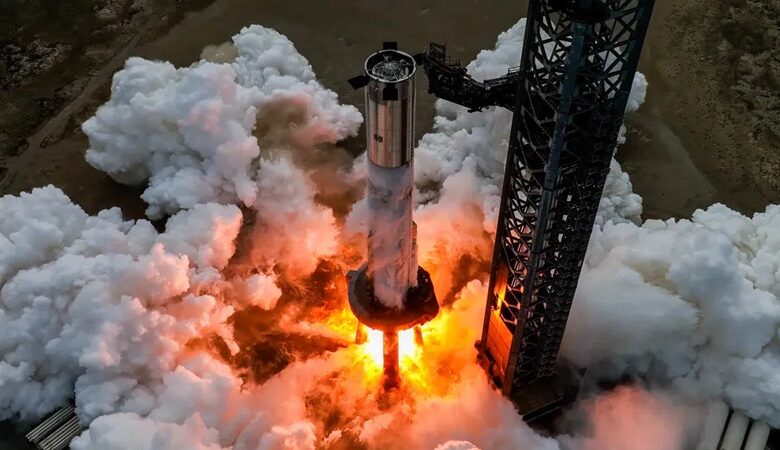SpaceX Starship’s Seventh Test Flight on January 10: Starlink Simulators, Super Heavy Boosters, and More
News Mania Desk / Piyal Chatterjee / 8th January 2025

SpaceX’s Starship will perform its seventh flight test, marking another step forward in the company’s quest for entirely reusable space launch vehicles. The launch is set for January 10 at 3:30 a.m. IST from SpaceX’s Starbase Orbital Launch Pad A in Boca Chica, Texas. The 97-minute launch window lasts until 5:07 a.m. IST, with backup options available until January 16. For the first time, the spacecraft will attempt to install simulated Starlink satellites, marking a critical milestone in its development.
According to a SpaceX statement, as published by space.com, the trip would include the deployment of ten Starlink simulators to test Starship’s capacity to launch operational next-generation satellites in future flights. The simulators, which are on a suborbital trajectory with the Starship upper stage, are likely to splash down in the Indian Ocean. This mission will demonstrate Starship’s capabilities to transport and deploy bigger, more complex payloads in the future.
Several design adjustments were made for this test. The flaps on Starship’s top stage have been lowered in size and moved closer to the vehicle’s tip, reducing heat exposure and simplifying the protective tile design. Space.com reports that propulsion system upgrades have boosted fuel capacity by 25%. Enhanced heat shield tiles, including a backup layer to handle any damage, are also being tested during this trip.
The Super Heavy booster, powered by Raptor engine number 314, will attempt to return to the launch site, aiming for a catch with the launch tower’s chopstick arms. If the circumstances are unfavorable, the booster will make a gentle splashdown in the Gulf of Mexico. Upgrades to the tower’s radar sensors have been implemented to increase precision during rescue operations. SpaceX has portrayed 2025 as a watershed moment for Starship, with plans for increasingly ambitious missions including flying personnel and cargo to the moon and Mars.






